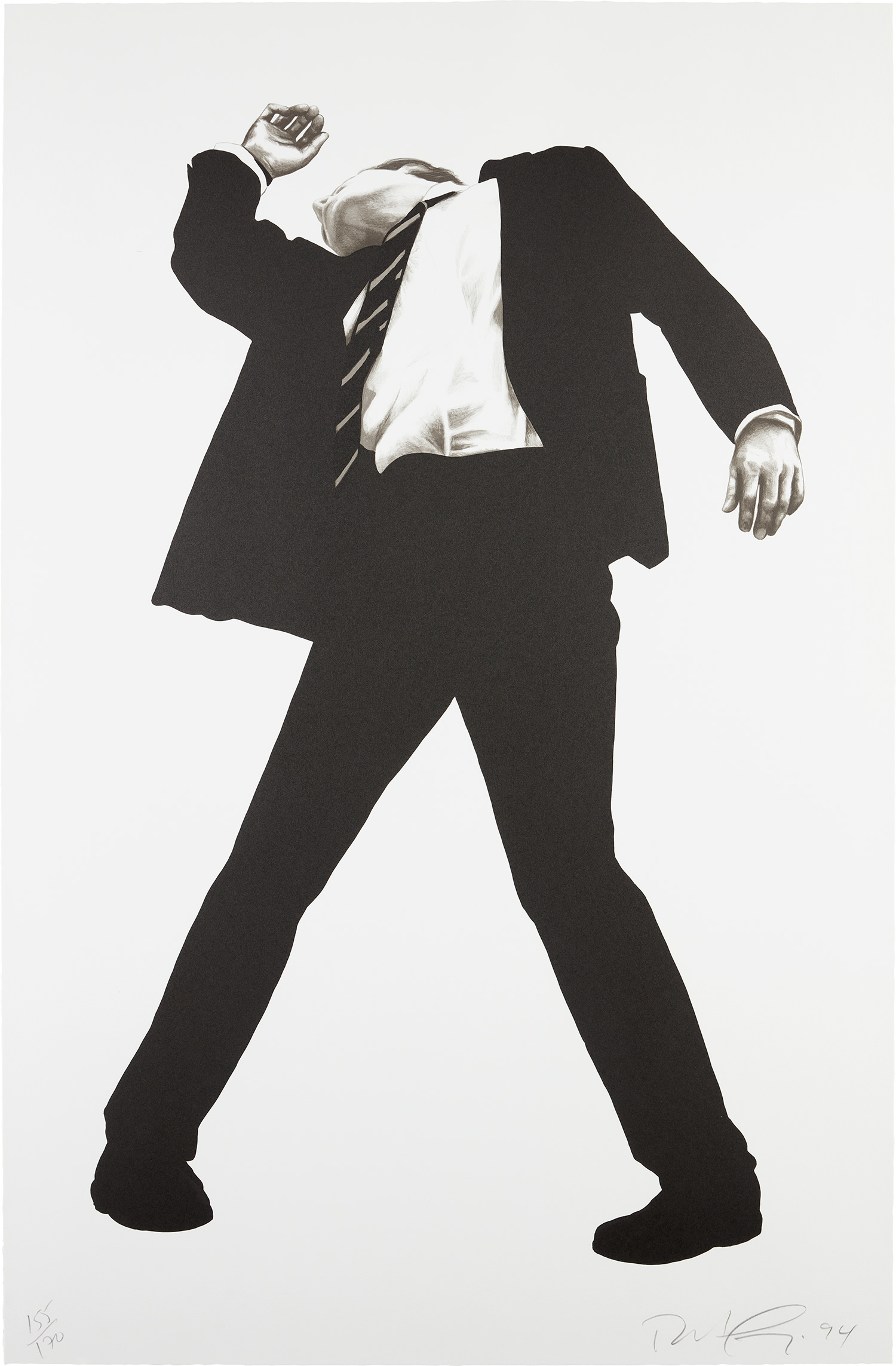

130
Robert Longo
Rick, from Men in the Cities
1994
Lithograph, on Arches paper, with full margins.
I. 38 x 22 3/4 in. (96.5 x 57.8 cm)
S. 46 x 30 in. (116.8 x 76.2 cm)
S. 46 x 30 in. (116.8 x 76.2 cm)
Signed, dated and numbered 155/170 in pencil (there were also 30 artist's proofs), published by Greenpeace, New York, framed.